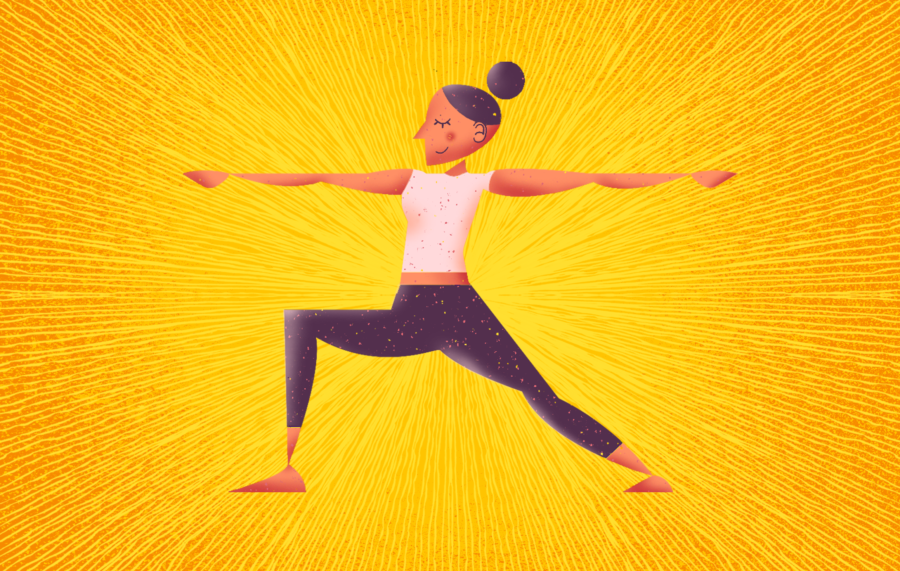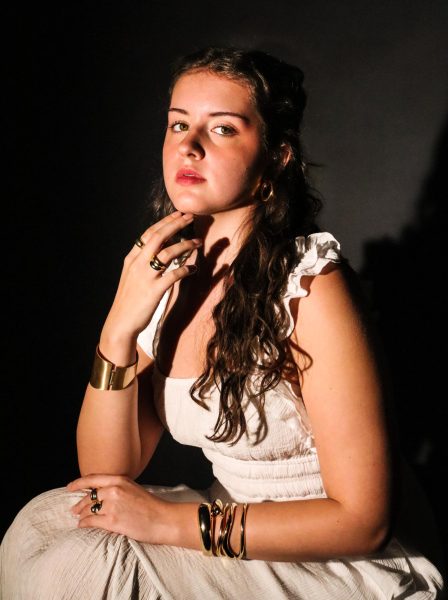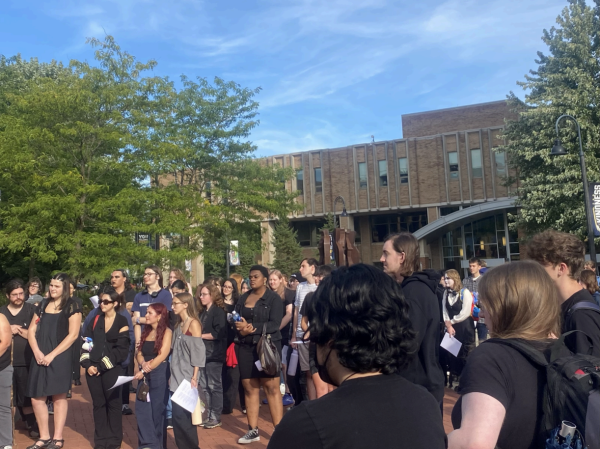Yoga for Thought
Stress is a common struggle amongst college students. Beads of sweat can start to form when the homework assignments start piling up, along with due dates flooding your calendar. It’s crucial to take care of your body during times of pressure and anxiety to be your best self.
A form of relaxation that can benefit students mentally and physically is the 5,000-year-old practice formed in India called yoga. According to yogaalliance.org, “Yoga is a system, not of beliefs, but of techniques and guidance for enriched living.”
Allison Yanci, who has been teaching restorative yoga and power yoga for over 2 years at the Student Recreation and Wellness Center at Kent State, emphasizes the advantages this form of exercise can have for students.
“Yoga is a system, not of beliefs, but of techniques and guidance for enriched living.”
“I try and tell people to come to your mat, let go of your thoughts, let go of your to-do list and to give this time to yourself, and just be as present as you can. I think it can be super beneficial but physically, mentally, spiritually, it’s also really relaxing,” she said.
There are three types of yoga classes offered to students at the Rec: restorative, power and yin yang. Even though they each teach yoga, there are minor differences in either the pace or type of poses executed in each class.
“Restorative yoga is a relaxing kind of yoga where you use a lot of props, and you stay in the poses for a few minutes at a time,” she says. “Power yoga is kind of the opposite of that. We’re moving quite a bit more, we’re moving quick, we’re doing challenging poses, we’re doing balance, we’re doing sometimes inversions of our balance. So people who are looking for a more physical benefit come to power classes.”
Yin yang is an intensity between the two, she says.
Yoga is something that doesn’t have to be done inside of a class setting. Doing poses at home can also be equally beneficial. Yanci has a few recommendations for yoga poses students can try at home.
“If it’s a student going for more of a relaxation, try to cope with stress, anxiety, I would say legs up the wall is one of my favorites,” she says. “I also like child’s pose because you are in a position where the body feels safe.”
Yanci also suggests doing yoga two or three times a week.
Overall, one of the most important aspects of yoga is breathing, which when done properly can be extremely beneficial to a student.
“I try and tell people to come to your mat, let go of your thoughts, let go of your to-do list and to give this time to yourself, and just be as present as you can.”
“A lot of people think yoga is just poses, and that’s really just one-eighth of what yoga is. There’s eight limbs of yoga, and one of the limbs is breath, just breathing properly,” Yanci says. “Whether you’re doing it in classroom setting, I think there’s so many benefits physically and mentally, not necessarily one more than the other.”
Yanci challenges those who are interested yet apprehensive about participating in yoga to try and experiment with the different classes.
“For people who have never done it: Don’t be scared. Yoga is a lot about being non-judgmental,” she says. “The best thing I can tell someone is listen to your body. One kind of yoga is not going to be for everyone. People who are new, try different styles of yoga, and try different teachers and see what you like. There’s way more to it than just exercise.”








